| Your browser is not supported. | ||
|
Please browse our site using any of the following options:
| ||
How To Maintain And Care For Hiking And Camping Gear
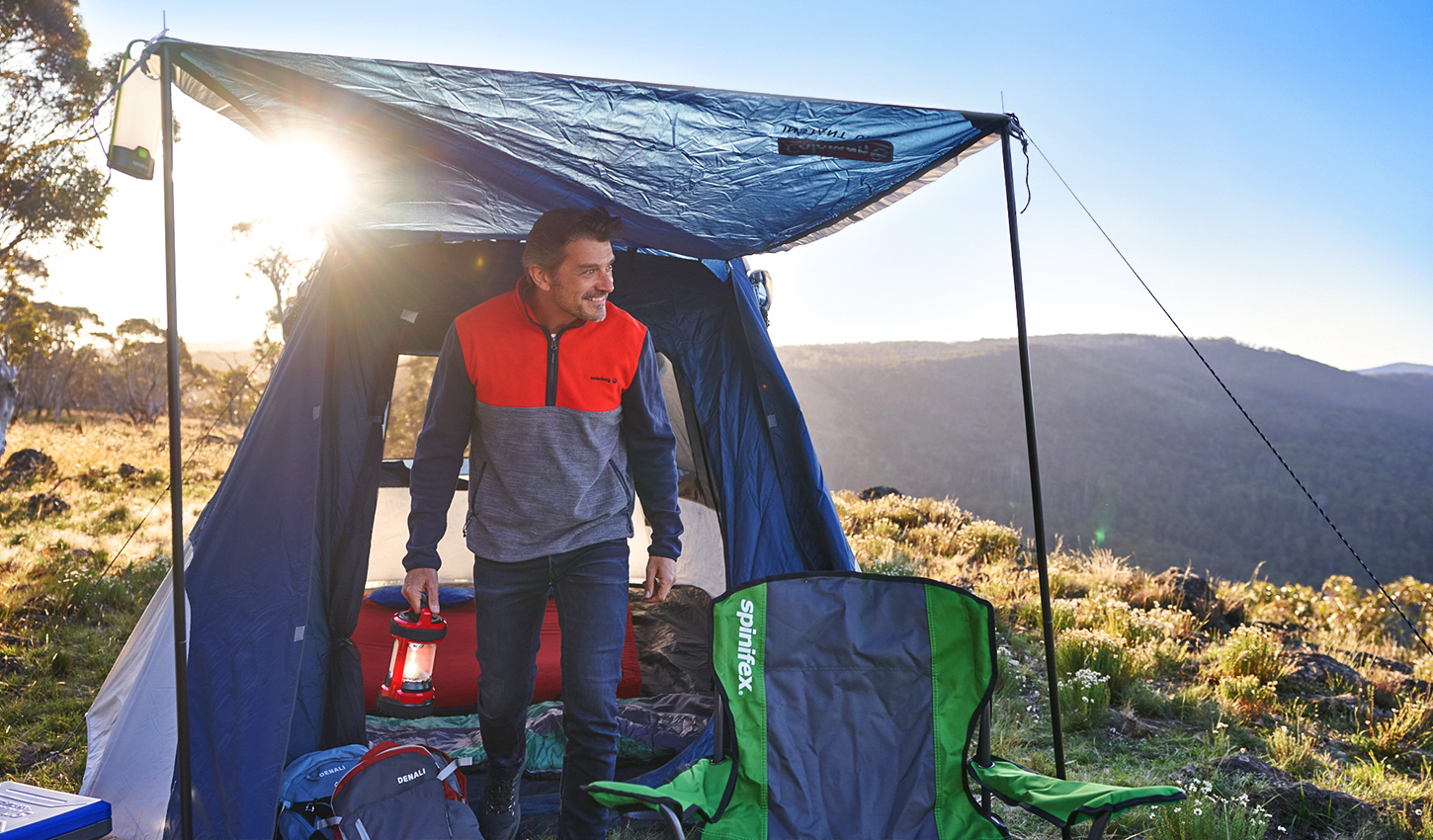
The colder months of the year can mean a drop-off in the amount of time spent in the great outdoors. Although your camping gear might be packed away and your mind focused on other things, winter - and dry season for Australia's tropical northern climate - offers the perfect opportunity to get on top of some important maintenance of your camping equipment.
By looking after your camping gear, you will not only get better performance from your purchases, you will also get more mileage for many camping adventures to come. Just follow our handy guide to keep your camping gear up-to-scratch…
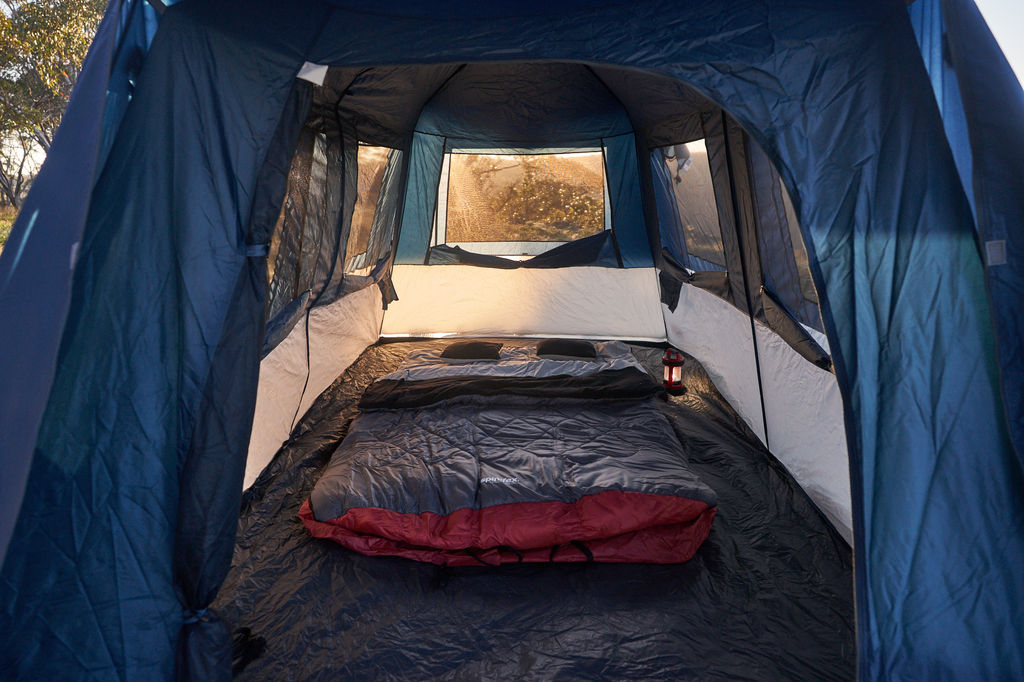
Tents
Maintaining your tent means ensuring it remains clean, as well as also odour and mould-free, while it’s packed away between camping seasons.
If it’s possible, set up your tent and give it a thorough going over. The best way to do this is to set up the tent shell first and check for dirt, leftover items from your last trip, mould spots or rips and tears. Give it a sweep out with a broom and dustpan and, if there are dried mud or spills in the tent, use a damp cloth to clean it or even a soft mop if your tent base is waterproof. Next, add the fly to the tent, and repeat the procedure. Be sure to check both the inside and the outside of the fly for dirt or damp.
If your tent was packed up while damp, it may have some mould spots, so take a few moments to scan for mould or developing mould. If you find mould, hang your tent fly over the clothesline or a railing. Next, mix vinegar and tea tree oil in a bottle and spray on the affected area. Allow the mixture to sit for approximately 30 minutes before you wipe it away with a damp cloth and leave the fly to dry. Tea tree oil is a natural anti-fungal, and your tent will smell fresh and clean. If you prefer to use a pre-mixed anti-mould cleaning solution, and at Anaconda, we have a wide range of cleaning options to choose from.
Take the time to unroll, check and re-tie all your fly ropes. Likewise, check for bent or damaged poles. Make sure you haven’t misplaced any of the tent pegs by placing one on the ground next to each peg point. If they came straight out of the ground and into the bag after your last camping trip, they may have dirt and damp on them. Wipe down the pegs with a damp cloth and shake out the peg bag.
Airbeds & Mattresses
Unpack and fold out the airbed. Inflate it to check for any air leaks. Punctures and leaks can easily be fixed with an air mattress repair kit. Depending on the materials of the airbed or mattress, give the bedding a good clean down with a soft brush. For a more detailed clean, follow the manufacturer's care instructions.
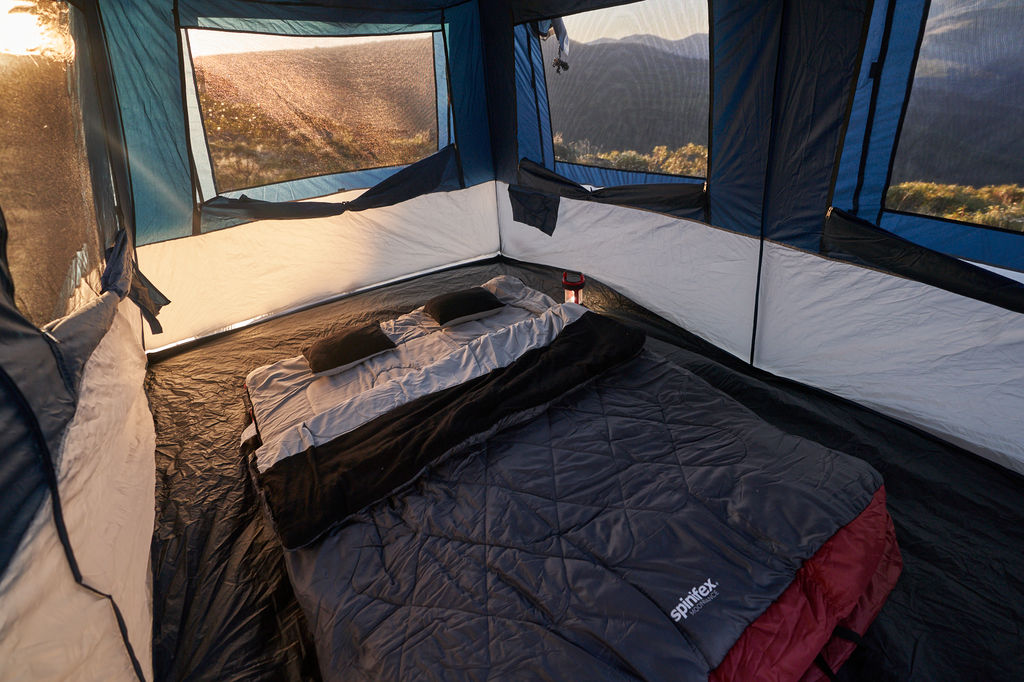
Sleeping Bags
As you did with cleaning your tent, unzip and hang your sleeping bag outside in the fresh air. Brush and clean off any mud or dirt. Do a spot-clean to make sure it's dirt-free and help keep it sterile. When any areas you've spot-cleaned are dry, zip and loosely fold up your sleeping bag in a larger bag (not its own compression bag) and hang it up for ventilation.
For a thorough clean, down-filled sleeping bags can be washed in a front-loading machine or a top-loader that doesn't have an agitator - the agitator in a top loader is too rough on down-filled products. Wash your sleeping bag on a gentle or delicates cycle with the water temperature at around 30 degrees, and using a down specific detergent. Allow it to dry by laying the sleeping bag completely flat to ensure the down doesn't clump together.
When it's completely dry, re-pack the sleeping bag. Don't compress the bag into tight boxes or storage containers - tightly compressed down fillings will eventually degrade and cause the material to weaken. Always follow the manufacturer's care instructions for premium results.
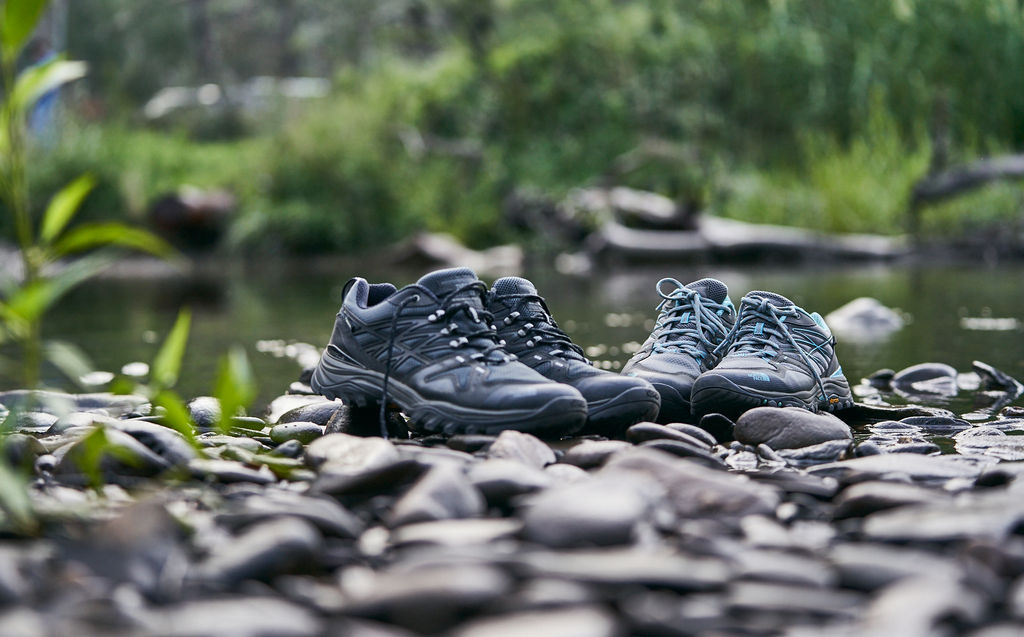
Hiking Boots
If you like the feel of leather hiking boots as opposed to the range of synthetic footwear available, your non-outdoor months are a great time to give them a good clean and rejuvenation. Scrub away any caked-on dirt using some mild soap and a toothbrush. If you prefer, you can purchase a special cleaning kit for keeping your camping and outdoor footwear in peak condition.
When it comes to synthetic footwear, remove the laces and footbeds to get into the tight spaces and brush off mud and grime with a soft brush and bowl of water, or purpose-specific cleaner. Never force dry your footwear with heat, this will result in the deterioration or hardening of the outer layer. Natural drying is best, try stuffing dry newspaper inside your footwear to soak up the moisture, frequently changing the wet newspaper for dry.
Once dry it is important to apply conditioning and waterproof treatments. Leather footwear needs conditioning to prevent splitting while all waterproof footwear requires you to reapply waterproofing agents. Application of proofer to the outer reduces the ability of moisture to penetrate the upper materials, especially those with mesh panels for improved breathability.
When it's time to store your boots for the season, take out any removable midsoles to promote ventilation.
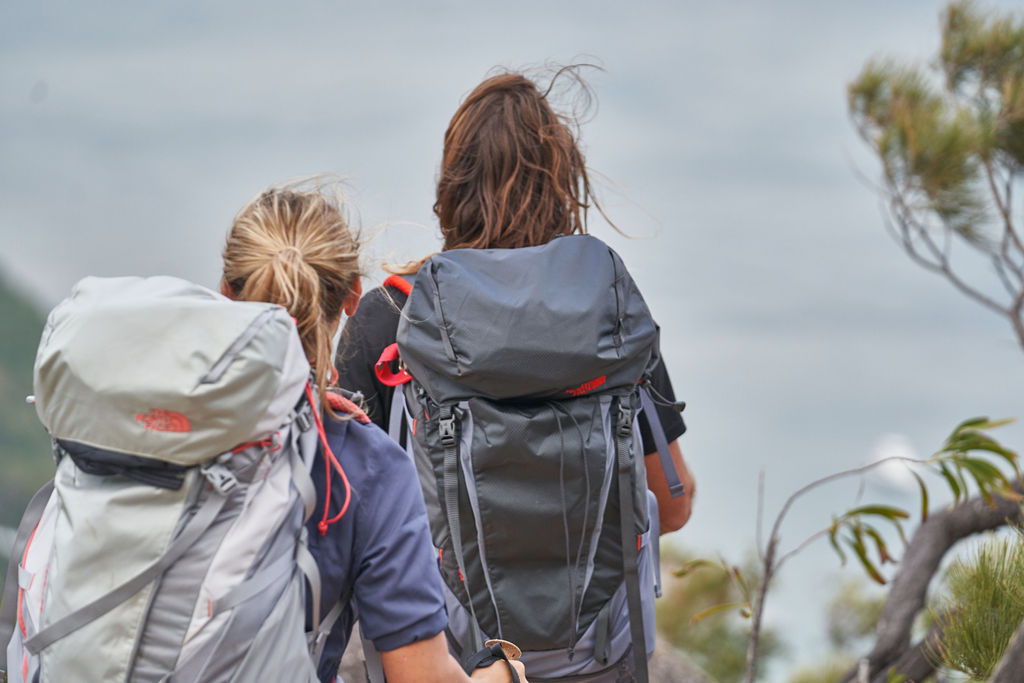
Backpacks & Daypacks
Use a mild, anti-bacterial hand soap to clean spills inside the pack or sweat from your pack's straps. To give it a whirl in a washing machine, place your pack inside a pillowcase so the buckles and straps don't tangle or get caught. A front-loading washer, or a top-loading machine that doesn't have an agitator, give the best results.
Unless the manufacturer's care instructions specify otherwise, let the backpack air dry - clothes dryers can damage zippers and synthetic materials. There's not much to storing a backpack, just as long as you've made sure anything that might spoil after a few days or weeks has been removed.
Hydration Pack Bladders & Mouthpeices
Caring for you water reservoir is something that you should be doing regularly. As far as an off-peak tune-up goes, cleaning tablets make cleaning your bladder fast, hygenic and simple. Alternatively, mix two tablespoons of baking soda and hot water in the bladder, and allow the mixture to circulate throughout the pack for around 30 minutes. Wash the mouthpiece with hot water and mild soap.
Rinse the bladder and mouthpiece thoroughly to remove any detergent residue and allow everything to thoroughly dry - dampness leads to a build up of mould, and consuming mouldy water on your next hike is sure to put a dampener on things (pardon the pun!).
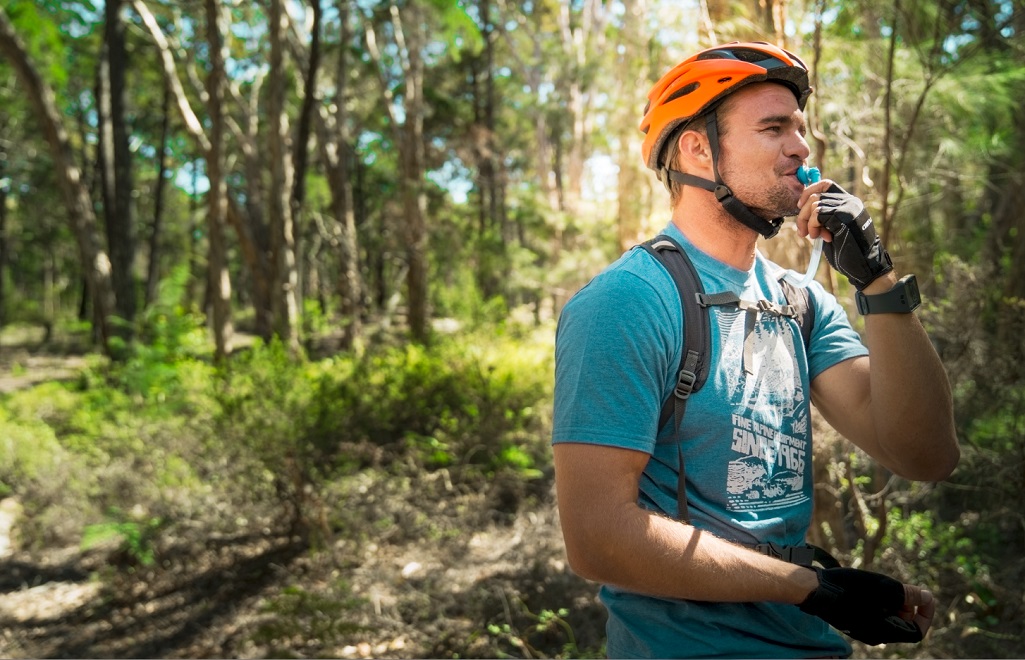
Remember…
Similar to getting your car serviced regularly, doing the equivalent of a grease and oil change on your camping gear means, when you unroll your swag for the first time in the new season, your gear will be working the way it's meant to, and you're well-equipped for an excellent camping experience.